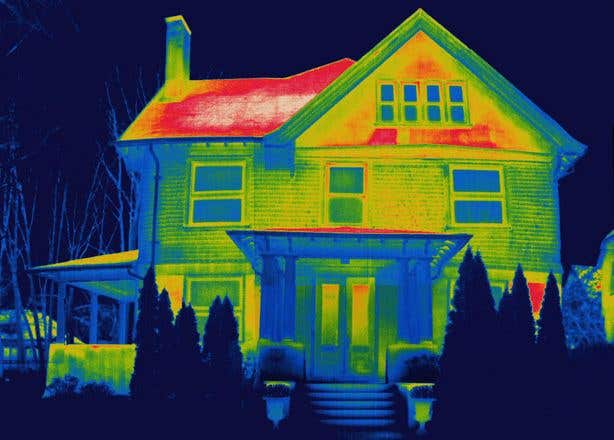Eco-friendly house paint reduces heating and cooling costs by 36%, study finds
Groundbreaking new paint technology has the potential to significantly alter the way we approach building insulation.

Groundbreaking new paint technology has the potential to significantly alter the way we approach building insulation. (CREDIT: Creative Commons)
In a groundbreaking discovery, scientists from Stanford University have unveiled a novel paint technology that has the potential to significantly alter the way we approach building insulation.
Promising significant reductions in energy consumption and greenhouse gas emissions, this discovery could be a game-changer in the fight against climate change.
A Global Challenge:
Space heating and cooling are not merely a matter of personal comfort; they have significant global implications. According to data, these account for approximately 13 percent of worldwide energy consumption and roughly 11 percent of greenhouse gas emissions.
Objects of different materials in various shapes, coated with the new paints. (CREDIT: Yucan Peng)
Yi Cui, a distinguished professor with multiple affiliations at Stanford and SLAC National Accelerator Laboratory, noted, “Energy and emissions from heating are forecast to continue to fall due to energy efficiency gains, but air conditioning use is on the upswing, particularly in burgeoning economies experiencing global warming.”
The Paint that Redefines Insulation:
The newly-developed paints stand apart due to their unique two-layer composition. Current low-emissivity paints, which usually have a metallic silver or gray hue, often face aesthetic limitations.
However, Stanford's innovation consists of an infrared-reflective bottom layer embedded with aluminum flakes. This is paired with an ultrathin, infrared-transparent top layer that incorporates inorganic nanoparticles. The best part? This top layer can be produced in a myriad of colors.
Related Stories
What sets this paint apart is its relationship with infrared light, responsible for nearly half of the Earth's natural heating. The dual layers work in tandem to reflect this light, ensuring minimal absorption by building materials. This reflection process maintains heat both inside during colder months and outside during the warmer seasons.
Specific results from the researchers' experiments are impressive: the paints reflected up to 80% of high mid-infrared light. When tested across a spectrum of colors, these paints outperformed conventional alternatives by tenfold in their reflective capabilities.
Beyond the Canvas of Buildings:
While the primary focus has been on residential and commercial structures, the applications of this paint extend far beyond. Yucan Peng, one of the study’s leads, illustrated its versatility, stating, “Both layers can be sprayed onto assorted surfaces of various shapes and materials." This adaptability means that sectors like refrigerated transportation, which spend a sizable chunk of their budget on cooling costs, could see significant financial savings and energy reductions.


(LEFT) Jian-Cheng Lai (CREDIT: Jian-Cheng Lai), (RIGHT) Yucan Peng (CREDIT: Yucan Peng)
Moreover, practicality tests have revealed that both paint layers are water-repellent, ensuring longevity even in humid conditions. Further strengthening its case for widespread adoption, the paint remained undamaged and as effective when exposed to extreme temperatures and varying acidity levels.
Towards a Sustainable Future:
Though the paint showcased minor increases in air conditioning use in certain U.S. cities, overall HVAC loads did not spike anywhere. This paints a promising picture of its overall efficiency.
Jian-Cheng Lai, another co-lead on the project, voiced the team's commitment to further enhancement: “Our team continues to work on refining the paint formulations for practical applications. For example, water-based solutions would be more environmentally friendly than the organic solvents we used. That could facilitate the commercialization of the paints.”
Stanford’s innovative paint promises a brighter, more sustainable future, with significant reductions in energy consumption and a tangible step towards global zero-emission goals. As the demand for energy-efficient materials surges, this discovery is poised to redefine the insulation landscape across various sectors.
For more environmental news stories check out our Green Impact section at The Brighter Side of News.
Note: Materials provided above by the The Brighter Side of News. Content may be edited for style and length.
Like these kind of feel good stories? Get the Brighter Side of News' newsletter.



